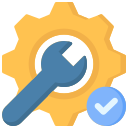Introduction
Overview of the Auction Market
The auction market has undergone a significant transformation in recent years, transitioning from traditional, in-person bidding to dynamic online platforms. This shift has been driven by advances in auction software, which have made it possible to conduct auctions more efficiently and accessibly. As the popularity of online auctions continues to grow, there’s a rising demand for robust, user-friendly auction platforms that cater to a diverse range of needs.
From silent auction software to live auctioneer software, the variety of available solutions highlights the market’s versatility. These platforms not only simplify the process of buying and selling but also offer enhanced features like real-time bidding and detailed auction analytics, making them indispensable tools in today’s digital landscape.
The Need for Modernization in Auction Platforms
The evolution of the auction industry calls for a modern approach to platform development. Traditional methods are being replaced by online auction software, which offers greater flexibility and scalability. The necessity for modernization is not just about adopting new technology but also about enhancing user experience and expanding reach. As a result, online silent auction platforms and mobile bidding platforms are becoming increasingly popular.
This shift towards digital solutions like electronic bidding software and internet auction software opens up opportunities for innovation. Businesses and individuals are looking for platforms that are not just functional but also intuitive and engaging, thereby setting new standards for how auctions are conducted in the digital era.
The Core Elements of an Effective Auction Site
User Interface and Experience
An effective online auction website builder must prioritize user interface (UI) and user experience (UX) design. The key is to create a platform that is both visually appealing and easy to navigate. This involves thoughtful layout design, clear call-to-action buttons, and responsive design elements that work seamlessly across different devices. The goal is to make the process of participating in auctions as intuitive and stress-free as possible.
Additionally, incorporating features like customizable dashboards, real-time updates, and personalized user profiles can significantly enhance the overall experience. The use of mobile bidding platforms and apps also plays a crucial role in making auctions accessible on the go, thereby meeting the needs of a mobile-first audience.
Reliable and Scalable Technology
The backbone of any online auction platform is its technology. Investing in reliable and scalable auction software is crucial for handling high volumes of traffic and large numbers of simultaneous bids. Scalability ensures that the platform can grow with your business, accommodating increasing numbers of users and listings without compromising performance.
Key technological considerations include robust server infrastructure, seamless integration capabilities, and advanced security features. Platforms like web auction software and virtual auction platforms need to be equipped with the latest technology to ensure smooth, uninterrupted auctions, fostering trust among users.
Security and Compliance Measures
In the world of online transactions, security is paramount. Auction platforms must implement stringent security protocols to protect user data and financial transactions. This includes using encrypted connections, secure payment gateways, and compliance with data protection regulations.
Furthermore, implementing measures to prevent fraud and ensure fair bidding practices is essential. This might involve using advanced algorithms to detect suspicious activities or incorporating identity verification processes. Security is not just a technical requirement; it’s a cornerstone for building user trust and credibility in the online auction marketplace.
Step-by-Step Guide to Building Your Auction Site
Planning and Research
The first step in building an auction site is thorough planning and research. This phase involves identifying your target audience, understanding their needs, and analyzing the competition. It’s essential to determine what type of auction platform you wish to develop, be it a general marketplace, a niche site like a car auction software platform, or a specialized service like silent auction software.
Research should also cover the latest trends in auction technology, such as the use of AI and machine learning for auction insights or the integration of white label auction software for brand customization. This phase sets the foundation for a well-informed and strategically planned auction platform.
Choosing the Right Auction Software
Selecting the appropriate auction software is a critical decision in the development process. The market offers a range of options, from online bidding software to specialized solutions like reverse auction software and auto auction software. The key is to choose software that aligns with your business goals, offers customization options, and provides robust support and updates.
Consider factors such as ease of use, scalability, feature set, and integration capabilities. Free silent auction software might be a good starting point for small-scale or nonprofit initiatives, while more comprehensive solutions might be needed for larger, commercial auction sites.
Design and Development
The design and development stage is where your auction site starts to take shape. This process involves creating a functional and aesthetically pleasing interface, ensuring the site is responsive and accessible. Engaging a team skilled in web design and development, familiar with the latest web technologies and trends, is crucial for creating an effective platform.
During this phase, the focus should be on integrating the chosen auction software seamlessly into the site’s design, ensuring a smooth user journey from browsing listings to placing bids. Testing the site’s functionality across different devices and browsers is also essential to ensure a consistent user experience.
Testing and Deployment
Before launching your auction site, comprehensive testing is essential to identify and resolve any technical issues. This includes load testing to ensure the site can handle traffic surges, security testing to safeguard against potential threats, and user testing to gather feedback on usability.
Once testing is complete and any issues are resolved, the site can be deployed. This stage involves setting up the live environment, finalizing deployment details, and preparing for launch. It’s crucial to have a support plan in place to address any issues promptly as users begin to explore and use the new platform.
Advanced Features to Consider
Real-Time Bidding Mechanisms
Incorporating real-time bidding mechanisms is a game-changer for online auctions. This feature allows users to participate in auctions as they happen, creating a dynamic and engaging experience. Utilizing technologies like WebSockets ensures that bid updates are communicated instantly, keeping the auction process fair and transparent.
Real-time bidding is particularly relevant for live auctioneer software and mobile bidding platforms, where the immediacy of the auction experience is a key draw for users. This feature not only enhances user engagement but also helps in capturing higher bids due to the immediacy and excitement it generates.
Mobile Accessibility and Apps
With the increasing use of smartphones, mobile accessibility is a critical feature for any online platform. Developing a mobile-responsive website or a dedicated app can significantly enhance user engagement. Mobile bidding platforms allow users to participate in auctions from anywhere, providing convenience and a wider reach for your auction site.
Mobile apps can offer additional features like push notifications for bid updates, easy photo uploads for sellers, and streamlined payment processes, making them an attractive option for tech-savvy users and increasing the platform’s overall appeal.
AI and Machine Learning for Auction Insights
Integrating AI and machine learning can provide valuable insights into user behavior and auction trends. These technologies can analyze large datasets to offer predictions on bidding patterns, recommend items to users based on their interests, and optimize pricing strategies.
AI-driven features not only enhance the user experience but also provide auction site owners with actionable insights to improve their offerings and strategies. This forward-thinking approach positions a platform at the forefront of innovation in the online auction industry.
Marketing and Growth Strategies
Effective Digital Marketing Techniques
Once your auction site is live, effective digital marketing is essential to attract users and build a strong online presence. Strategies like search engine optimization (SEO), content marketing, and social media advertising can help in reaching your target audience. Utilizing keywords such as ‘best silent auction software’ or ‘online auction website builder‘ in your content can improve search engine rankings and visibility.
Email marketing campaigns and partnerships with influencers can also drive traffic to your site. Tailoring your marketing efforts to highlight unique features like your virtual auction platform or white label auction software can set you apart from competitors.
Building a Community Around Your Auction Site
Creating a sense of community can significantly boost user engagement and loyalty. This can be achieved through interactive elements like forums, user reviews, and social sharing options. Hosting online events or webinars about using your auction platform can also foster a sense of belonging among users.
Encouraging users to share their success stories and providing excellent customer service can help in building a positive reputation and a loyal user base. A strong community not only supports current user retention but also attracts new users through word-of-mouth.
Partnerships and Expansion Opportunities
Exploring partnerships and expansion opportunities can aid in the growth of your auction platform. Collaborating with established brands or other online marketplaces can open new avenues for user acquisition and diversification of offerings.
Consider exploring niche markets or integrating additional services like electronic bidding software for charities or specialized auto auction software. Such expansions not only increase the platform’s market reach but also enhance its functionality and appeal.
Case Studies and Success Stories
Interviews with Successful Auction Site Owners
Gleaning insights from successful auction site owners can provide invaluable lessons. Interviews with these entrepreneurs can reveal strategies that led to their success, challenges faced, and how they leveraged auction software to create compelling user experiences.
These case studies can serve as inspiration and a source of practical advice for those looking to enter the auction market or enhance their existing platforms.
Analysis of Emerging Trends in Online Auctions
Analyzing emerging trends is crucial for staying ahead in the dynamic auction market. This section can delve into the latest developments, such as the rise of virtual auction platforms and the integration of advanced technologies like blockchain for transparency and security in auctions.
Understanding these trends helps in anticipating market shifts and adapting your platform to meet future demands, ensuring long-term success and relevance in the industry.
Conclusion
Future of Online Auctions
The future of online auctions looks promising, driven by continuous technological advancements and changing consumer behaviors. As we move forward, we can expect to see more innovative use of technologies like augmented reality for product previews and increased adoption of AI for personalized auction experiences.
Staying abreast of these changes and being willing to adapt will be key for auction platforms aiming to maintain their competitiveness and appeal in this evolving market.
Final Thoughts and Recommendations
In conclusion, building a successful online auction site involves a mix of strategic planning, choosing the right technology, and ongoing innovation. Whether it’s leveraging the best silent auction software or developing a robust mobile bidding platform. So the focus should always be on creating a seamless and engaging user experience.
Remember, the success of an auction platform lies not just in the technology it uses, but also in how it connects with and serves its user community. By continuously evolving and adapting to user needs and market trends, your auction platform can achieve lasting success and relevance in the dynamic world of online auctions.








